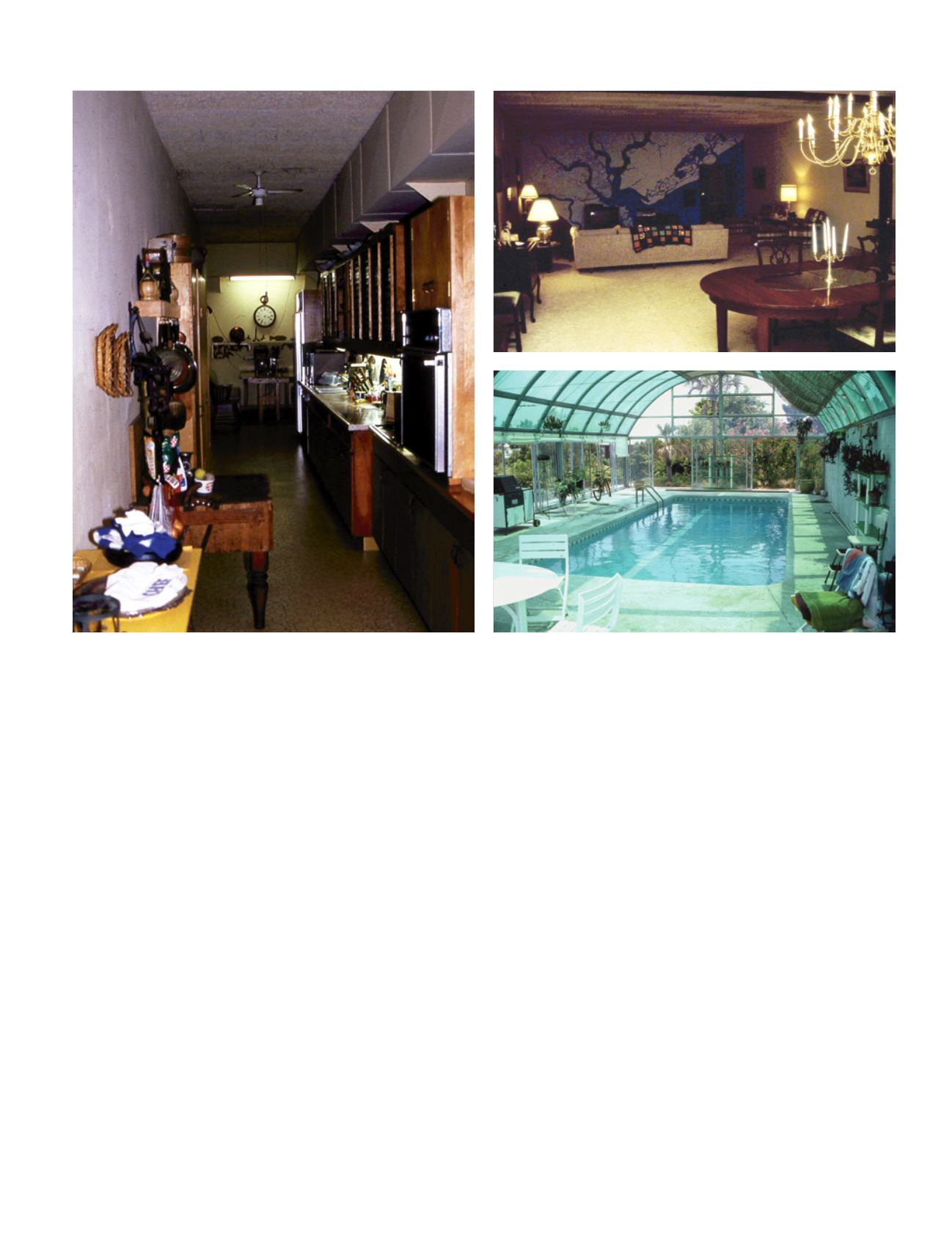

www.MountPleasant.Rentals |
www.MountPleasantBuilders.com|
www.CarolinaParkMagazine.comWar II enemies. At either end of a massive bunker, built of
reinforced concrete and covered with sand, dirt and grass,
the Army placed a pair of 12-inch guns that were supposed
to help repel an attack from the Germans or their allies.
As the story goes, the guns were fired only twice: once
to see if they actually worked and another time to check
their accuracy. This information came from Jim Curd,
a Mount Pleasant resident who should know a little bit
about Battery Marshall, the enormous bunker between
I’On and Brownell avenues that was subdivided into three
residences, separated by cinder block walls, after the Army
deactivated Fort Moultrie in 1947. He lived in the center
section with his parents and siblings for eight years, from
1965 until he graduated from high school in 1973.
His parents remained in the windowless, 9,000-square-
foot home, purchased for $10,000, until his dad, Bob
Curd, passed away in 2001, and his family still owns the
property. The back door, barely visible from I’On Avenue,
is boarded up, and vegetation now covers the stairs that
once led to the top of the bunker. Though the former
Curd home is empty and barely recognizable as a resi-
dence, people still live in the bunker homes on either side.
So what was it like living in the bowels of a bunker?
Curd remembers that the home had heating and air
conditioning but that his family never used either, relying
instead on fans and dehumidifiers. Surrounded by solid
concrete plus sand and dirt, the home was well-insulated.
“It was very comfortable, and it made sense to wear
shorts and a T-shirt, especially in the winter,” he com-
mented, pointing out that the home was warmer in the
cool months and cooler during coastal Carolina’s hot and
humid summers. “We tried the heat and air, but it really
didn’t work and we never tried it again.”
Curd added that one of the strangest things about his
boyhood home was that there was no natural light ex-
cept the small amount of sunlight that came through the
glass doors at the back entrance, the ventilator shaft in
the kitchen and the “Atlantic room,” a sunroom built by
Curd’s father. The lack of natural light made alarm clocks a
necessity, Curd pointed out.
Bob Curd had little choice but to use dynamite to
eliminate enough of the outside concrete wall so he could
construct the Atlantic room, which provided the Curd
family with an excellent view of the ocean. At the time,
there were no houses between Brownell and the beach.
That has changed over the years.
Left
: The kitchen in Curd home.
Bottom right:
The Atlantic Room Bob Curd built so his family could have a view of the ocean.
Above right:
The bunker home had little natural light, so a variety of lamps were a necessity. This shot was taken from the dining room, looking into the living room.
















